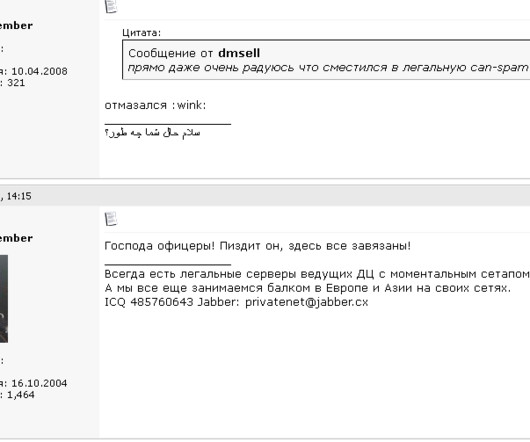Stark Industries Solutions: An Iron Hammer in the Cloud
Krebs on Security
MAY 23, 2024
Two weeks before Russia invaded Ukraine in February 2022, a large, mysterious new Internet hosting firm called Stark Industries Solutions materialized and quickly became the epicenter of massive distributed denial-of-service (DDoS) attacks on government and commercial targets in Ukraine and Europe. An ad for war.md, circa 2009.














Let's personalize your content